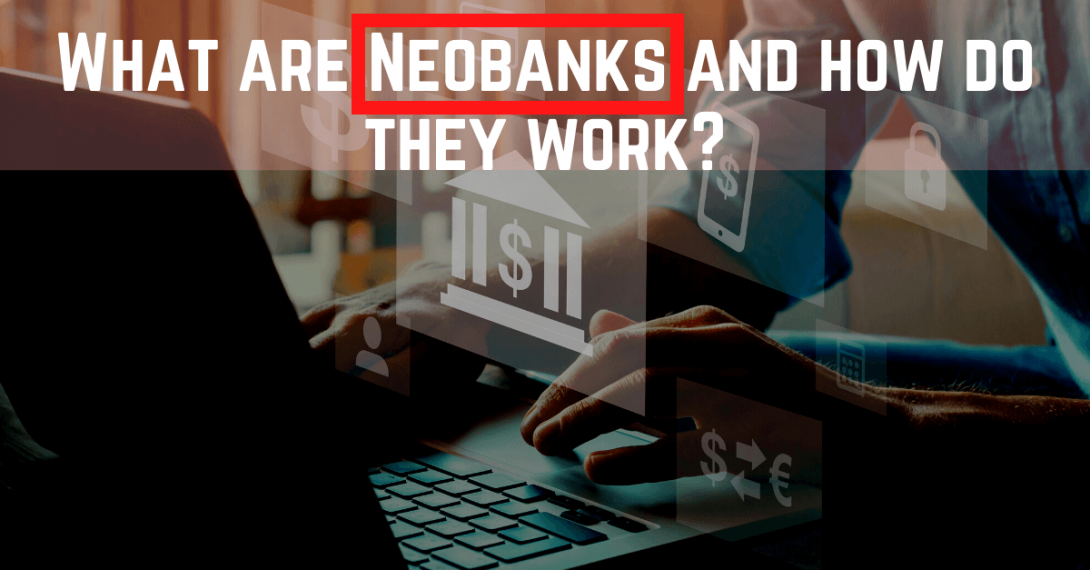What Are Neobanks?
Neobanks are a new type of online-only fintech companies that operate similarly to banks. Neobanks offer most, if not all, of the services that traditional banks do, such as the ability to open and manage a checking or savings account, make payments, and transfer money. However, because neobanks are digital, they can often offer these services more conveniently and at a lower cost than traditional banks. Many offer zero fees to open and maintain your account.
How Do Neobanks Work?
Neobanks are typically accessed through their website or mobile application, which customers can use to access their accounts and manage their funds. Because neobanks have no physical branches, all transactions are done digitally, and they usually offer many of there digital services when compared to their physical counterparts.
In order to offer the same services as traditional banks, neobanks often partner with established financial institutions. This allows them to offer services such as FDIC-insured accounts and access to the Automated Clearing House network, which is used for electronic payments. The traditional banks that support the majority of all US neobanks are Blue Ridge Bank, NBKC, Evolve Bank & Trust, Coastal Community Bank, and Stride.
What Are the Benefits of Neobanks?
Neobanks offer a variety of benefits including, advanced software tools, finance APIs and integrations. One of the main benefits of neobanks also is their convenience. Because they operate entirely online, customers can manage their money and make transactions from anywhere, at any time. Many traditional banks still require a branch visit for certain types of transactions. This can be especially useful for people who live in rural areas or have busy schedules, as they do not have to travel to a physical branch to conduct their banking business.
In addition to their convenience, neobanks often offer lower fees and higher interest rates than traditional banks. This can make them a more cost-effective option for customers, especially those who are looking to save money on fees and earn more on their savings.
Neobanks can be a source of innovation in the financial industry. Because they are digital-first and operate outside of the traditional banking system, neobanks have the freedom to experiment with new technologies and business models. This can lead to new and improved financial products and services that benefit customers.
What Are the Drawbacks of Neobanks?
While neobanks have many benefits, there are also some potential drawbacks to consider. One of the main drawbacks is the lack of personal interaction with neobanks. Because they do not have physical branches, customers cannot speak with a teller or banker in person if they have questions or concerns about their accounts.
Another drawback of neobanks is also an advantage, which is their lack of physical branches. While this can be an advantage in some ways, it can also make it difficult for customers to handle complex financial transactions, such as applying for a mortgage or setting up a trust. In these cases, customers may need to visit a traditional bank or other financial institution in order to complete the transaction.
Finally, there is the potential for security issues with neobanks. Because all transactions are done digitally, there is a risk that personal and financial information could be compromised if the neobank's systems are hacked or otherwise breached. This is also a threat to the digital platforms of traditional banks as well. While neobanks take steps to protect their customers' information, there is always a risk when dealing with sensitive information online.
How Do Neobanks and Traditional Banks Work Together?
As mentioned earlier, neobanks often partner with traditional banks in order to offer the same services as a traditional bank. This allows neobanks to offer FDIC-insured accounts and access to the Automated Clearing House network, while still maintaining their digital-first business model.
The partnerships between neobanks and traditional banks can also lead to potential competition between the two. Traditional banks may see neobanks as a threat to their business, as consumers increasingly turn to digital platforms for their banking needs. In response, traditional banks may try to adopt neobank technology in order to improve their own services and stay competitive.
What Are Some Examples of Successful Neobanks?
There are many examples of successful neobanks in the US. Some well-known neobanks include Mercury, Wise, Relay, Airwallex, Axos, North One, Novel, and Globalfy. These neobanks have gained popularity for their convenience, low fees, high interest rates and also that they offer bank accounts to non US residents with the need for a social security number (SSN) or Individual Tax Identification Number (ITIN).
Conclusion
In conclusion, neobanks are online-only financial institutions that offer many of the same services as traditional banks, but with added convenience and lower costs. By partnering with established financial institutions, neobanks are able to offer services such as FDIC-insured accounts and access to the Automated Clearing House network.
While there is potential competition between neobanks and traditional banks, the growth and success of neobanks shows the potential for future success in the financial industry. As more and more consumers turn to digital platforms for their banking needs, neobanks are well-positioned to meet this demand and provide innovative financial services.
FAQ
How are neobanks different from traditional banks?
Neobanks are online-only financial institutions that offer the same services as traditional banks, but through digital platforms such as mobile apps. They often offer lower fees and higher interest rates, but do not have physical branches.
What makes digital banks or neobanks different than traditional financial institutions?
Digital banks and neobanks are similar in that they are both online-only institutions that offer bank-like services. However, neobanks typically focus on providing a leaner, more convenient banking experience, while digital banks are more similar to traditional banks in terms of the services they offer.
What is the difference between neobanks and digital banks
Neobanks and digital banks are similar in that they are both online-only institutions that offer bank-like services. However, neobanks typically focus on providing a leaner, more convenient banking experience, while digital banks are more similar to traditional banks in terms of the services they offer. Additionally, neobanks often partner with traditional banks in order to offer services such as FDIC-insured accounts, whereas digital banks may be traditional banks that have embraced digital technology.
What is the purpose of a neobank? The purpose of a neobank is to provide convenient, accessible, and cost-effective banking services to customers through digital platforms. Neobanks often partner with traditional banks in order to offer the same services as traditional banks, but with a focus on technology and innovation.
Can neobanks replace traditional banks? While neobanks offer many of the same services as traditional banks, they do not have physical branches and may not be able to handle all of the same transactions as traditional banks. Therefore, neobanks cannot completely replace traditional banks, but they can provide an alternative option for customers who prefer digital banking.
How do neobanks make money? Neobanks make money in the same way that traditional banks do, by charging fees for their services and earning interest on the money they hold.
Does a neobank have an edge over a regular bank? Neobanks can have an edge over traditional banks in terms of convenience, cost, and innovation. Because they operate entirely online, neobanks can offer services that are more convenient and accessible for customers. Additionally, neobanks often have lower fees and higher interest rates than traditional banks. Finally, because they are digital-first and operate outside of the traditional banking system, neobanks have the freedom to experiment with new technologies and business models.
Why are banks partnering with neobanks? Banks may partner with neobanks in order to offer their customers additional digital banking options and stay competitive in an increasingly digital world. Partnerships with neobanks can also give traditional banks access to new technologies and business models that they may not have developed on their own.
What is the main difference between an online traditional bank and a virtual bank? The main difference between an online traditional bank and a virtual bank is that online traditional banks have a mix of physical and digital channels, whereas virtual banks are online-only and do not have physical branches.
What is the difference between a bank, a neobank, and a non-bank provider of banking services? A bank is a financial institution that offers traditional banking services, such as checking and savings accounts, loans, and investment products. A neobank is a digital-only financial institution that offers similar services through online channels such as mobile apps. A non-bank provider of banking services is a company that offers banking services but is not a traditional bank or neobank, such as a credit union or online lender.
What are the main differences between banks and crypto? Banks are financial institutions that offer traditional banking services, such as checking and savings accounts, loans, and investment products. Crypto, short for cryptocurrencies, are digital assets that

